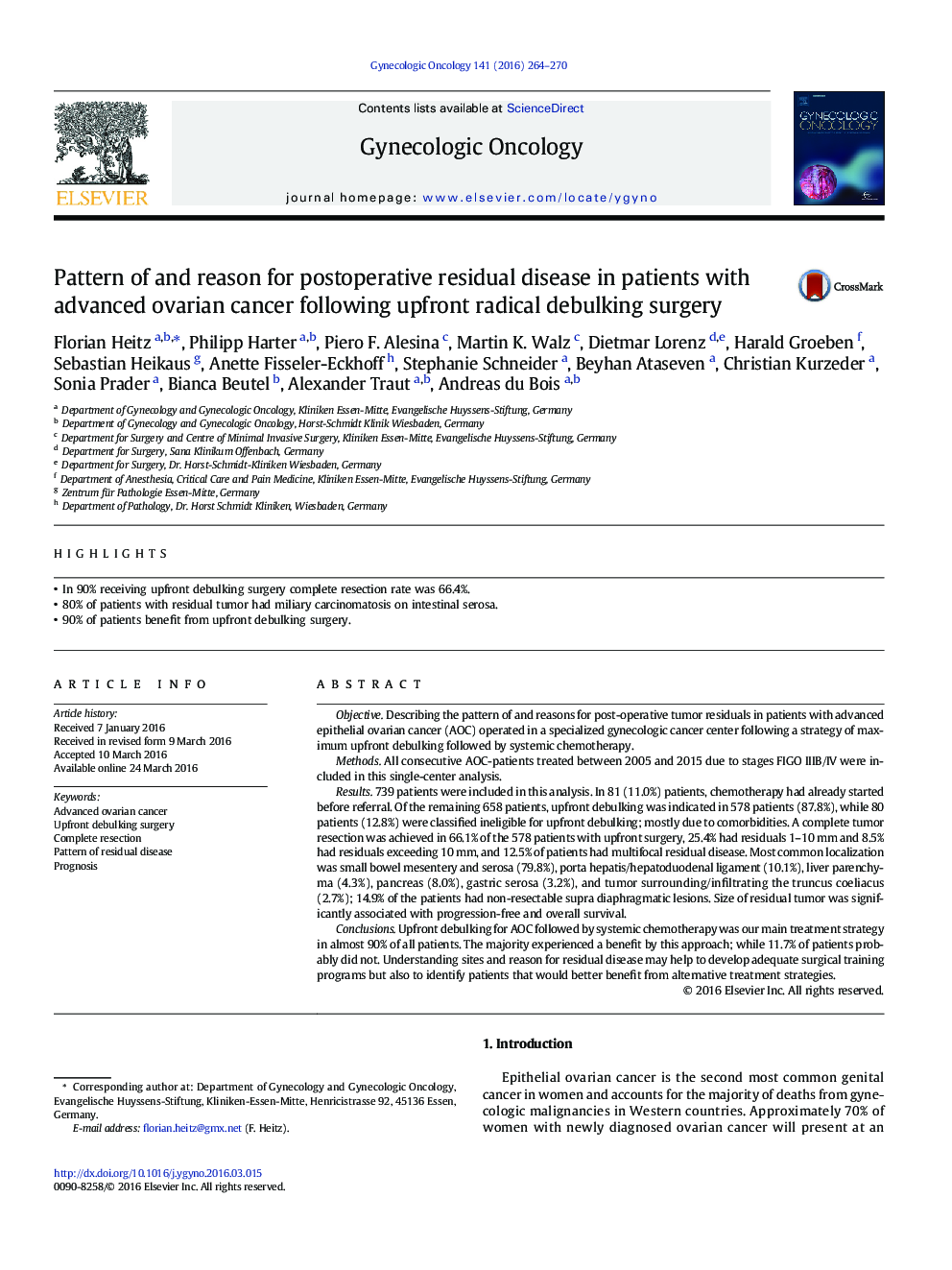| کد مقاله | کد نشریه | سال انتشار | مقاله انگلیسی | نسخه تمام متن |
|---|---|---|---|---|
| 6182594 | 1254004 | 2016 | 7 صفحه PDF | دانلود رایگان |
- In 90% receiving upfront debulking surgery complete resection rate was 66.4%.
- 80% of patients with residual tumor had miliary carcinomatosis on intestinal serosa.
- 90% of patients benefit from upfront debulking surgery.
ObjectiveDescribing the pattern of and reasons for post-operative tumor residuals in patients with advanced epithelial ovarian cancer (AOC) operated in a specialized gynecologic cancer center following a strategy of maximum upfront debulking followed by systemic chemotherapy.MethodsAll consecutive AOC-patients treated between 2005 and 2015 due to stages FIGO IIIB/IV were included in this single-center analysis.Results739 patients were included in this analysis. In 81 (11.0%) patients, chemotherapy had already started before referral. Of the remaining 658 patients, upfront debulking was indicated in 578 patients (87.8%), while 80 patients (12.8%) were classified ineligible for upfront debulking; mostly due to comorbidities. A complete tumor resection was achieved in 66.1% of the 578 patients with upfront surgery, 25.4% had residuals 1-10Â mm and 8.5% had residuals exceeding 10Â mm, and 12.5% of patients had multifocal residual disease. Most common localization was small bowel mesentery and serosa (79.8%), porta hepatis/hepatoduodenal ligament (10.1%), liver parenchyma (4.3%), pancreas (8.0%), gastric serosa (3.2%), and tumor surrounding/infiltrating the truncus coeliacus (2.7%); 14.9% of the patients had non-resectable supra diaphragmatic lesions. Size of residual tumor was significantly associated with progression-free and overall survival.ConclusionsUpfront debulking for AOC followed by systemic chemotherapy was our main treatment strategy in almost 90% of all patients. The majority experienced a benefit by this approach; while 11.7% of patients probably did not. Understanding sites and reason for residual disease may help to develop adequate surgical training programs but also to identify patients that would better benefit from alternative treatment strategies.
Journal: Gynecologic Oncology - Volume 141, Issue 2, May 2016, Pages 264-270
